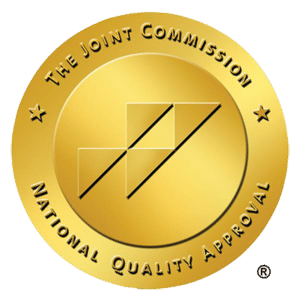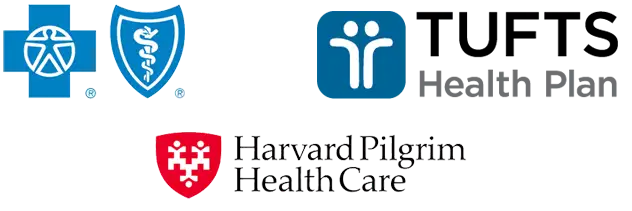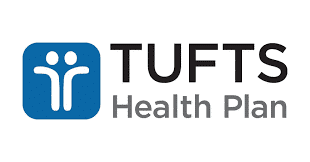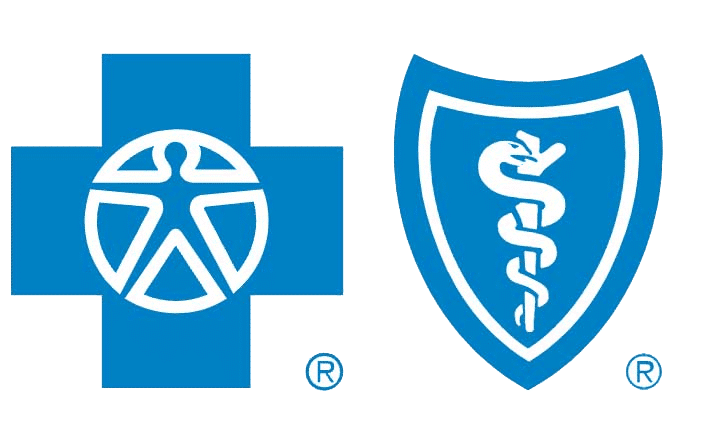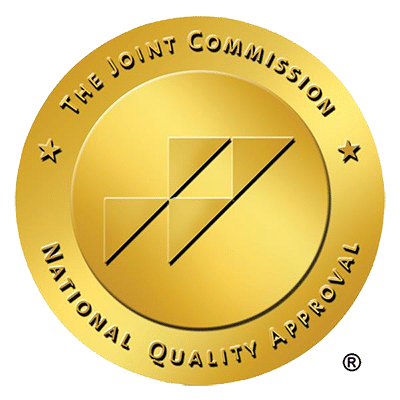Are you or someone close showing unexplained mood swings, health changes, or have you noticed unusual items that might be linked to drug use? These could be signs of heroin addiction, a serious and potentially life-threatening condition. This straight-to-the-point guide will walk you through each sign and provide a roadmap for the next step towards recovery without overwhelming you with detail.
Key Takeaways
- Heroin addiction is a complex disease influenced by genetic, environmental, and mental health factors, with symptoms of addiction including mood swings, social withdrawal, and physical signs like weight loss and track marks.
- The physical and psychological effects of heroin use are profound, presenting immediate health risks such as slowed heart rate and breathing, alongside an increased risk of mental health issues, like depression, anxiety, and suicidal thoughts.
- Treatment for heroin addiction involves a medically supervised detoxification process and enrollment in rehabilitation programs, which can be inpatient or outpatient, and focus on managing withdrawal symptoms and providing structured therapy.
Understanding Heroin Addiction
Heroin use disorder, often referred to as heroin addiction or abuse, transcends mere drug use and is a multifaceted illness that profoundly modifies brain function and behavior. This condition traps sufferers in an unyielding cycle of dependence on this highly addictive substance. Even as it devastates their existence, the powerful hold of heroin use disorder compels individuals to persistently engage with the drug, leading to a loss of control over their lives.
Risk Factors
Heroin addiction doesn’t emerge without warning. It is often the result of specific risk factors that make an individual more susceptible to engaging in substance abuse. Hereditary predispositions are especially important, as they can shape how prone a person might be to becoming addicted. A history of substance abuse within your family dramatically increases the probability of falling into heroin addiction.
Similarly, environmental elements are pivotal in laying the groundwork for an addiction to heroin. The way a family regards drug use, along with peer pressure and being around environments where drugs are used, can decisively push someone toward their initial encounter with drugs. When such drug use occurs during key stages of brain development, this substantially amplifies the danger of spiraling into full-blown addiction.
Co-occurring Disorders
Mental illness frequently sets the stage for heroin addiction, as those battling ailments like depression or anxiety may be more prone to succumbing to drug addictions, with heroin often wrongly perceived as a quick escape from their psychological distress. This is an illusion. What seems like respite spirals into full-blown drug abuse – particularly of heroin – ensnaring individuals in its grip. Recognizing the importance of professional intervention is vital. Such individuals should turn to mental health services administration that offers essential assistance and therapy options tailored for overcoming addiction while addressing underlying mental health concerns.
Physical Symptoms of Heroin Use
Heroin use leads to physical consequences that are both detrimental and disturbing. Upon using heroin, individuals experience immediate physiological responses including:
- a reduced heart rate
- decreased depth of breathing
- slowed mental processing
- extended periods of lethargy
Those who regularly use heroin often face considerable weight loss stemming from reduced metabolic rates, gastrointestinal upset, and diminished hunger.
Appearance Changes
Upon close observation, the indications of heroin use become apparent on the individuals who engage in it. Significant health issues related to heroin are often reflected in noticeable changes to a person’s outward appearance. Regular injections of heroin, for example, may cause veins to collapse and result in bacterial infections.
These health problems manifest as observable skin alterations including track marks from needle punctures and signs of skin infections. These physical transformations go beyond mere aesthetic concerns. They serve as urgent pleas for help that necessitate prompt action.
Health Consequences
Heroin use causes destruction that transcends superficial effects on one’s appearance. This substance inflicts severe harm to an individual’s well-being and way of life by obstructing pain perceptions, decelerating the heartbeat, and impeding respiratory processes.
In its most severe form, a heroin overdose may critically inhibit essential bodily functions such as cardiac rhythm and breathing capacity, resulting in potentially fatal consequences or immediate death.
Psychological Indicators of Heroin Addiction
Heroin addiction manifests not only through physical symptoms but also psychological effects. Habitual use of heroin often results in mood fluctuations, heightened irritability, and a tendency to pull away from social interactions as common signs of this form of addiction. While these changes can start off minor, they tend to become more noticeable as the addiction progresses.
Mood and Behavior Changes
Individuals struggling with heroin addiction might experience substantial emotional fluctuations, ranging from highs of excitement to lows of hopelessness. This is attributable to the effects on the brain’s opioid receptors. A notable behavioral indication of such an addiction includes increased irritability, especially when compounded by the emergence of unpleasant withdrawal symptoms.
Habitual behaviors among those using heroin may include:
- Pulling away from social engagements
- Seeking solitude
- Breaking connections with friends and family
- Abandoning hobbies and interests once cherished
These patterns are commonly seen in instances where heroin abuse remains ongoing without intervention or treatment.
Mental Health Impact
Heroin usage goes beyond altering one’s mood and behavior. It carries a heightened risk of precipitating mental health problems such as depression, anxiety, and suicidal ideation. Those who use heroin are substantially more likely to entertain or act upon suicidal thoughts, with the number of non-fatal attempts outnumbering successful suicides by a factor of ten.
Indeed, specific factors including being young and female, experiencing homelessness or unemployment, along with previous psychiatric disorders, increase the probability of suicide among individuals using heroin. Engaging in self-harm is common within this group and serves as a strong indicator for future life-threatening suicide attempts.
Want to Learn More about Heroin Addiction?
Our addiction recovery team is here 24/7 to answer your questions or to get you help.
Recognizing Heroin Paraphernalia
Understanding the indications of heroin use involves more than just monitoring behavioral or physical alterations in an individual. It is equally important to be able to spot the various implements involved in using the drug, as these can offer significant insights into their substance habits. The paraphernalia associated with heroin consumption may include a range of items tailored for different methods such as preparing, injecting, snorting, and smoking the drug.
Injecting Equipment
Heroin consumption comes in various forms, each necessitating specific paraphernalia. Injection is a prevalent method where the evidence is typically noticeable. Items like needles, syringes, and spoons are frequently associated with this practice.
Finding these objects, particularly in places where their presence isn’t expected, can be a significant sign of heroin usage.
Snorting and Smoking Tools
Individuals who opt for inhaling or smoking heroin will utilize distinct implements. Smoking the drug typically involves using pipes or foil pieces, while snorting requires straws or similar tubular instruments to draw the substance into their nasal cavities.
Identifying such items is indicative of heroin use and plays a vital role in prompt recognition and timely intervention efforts with users.
Signs of a Heroin Overdose
A heroin overdose represents an extremely serious medical emergency. Key physical indications of a heroin overdose include shallow respiration, discoloration to blue on the lips, and constricted pupils. Significant behavioral symptoms like confusion, lack of responsiveness, and unpredictable actions are strong indicators that someone may be experiencing a heroin overdose.
It is crucial to acknowledge these symptoms promptly because they call for urgent medical attention in order to avoid deadly outcomes.
Physical Symptoms
An overdose of heroin is usually indicated by a range of physical signs, which include:
- extremely small pupils
- a state of extreme sleepiness
- breathing that is faint or shallow
- lips with a bluish hue
- reduced awareness or alertness
It’s critical to identify these symptoms and other related signs promptly because they call for urgent medical attention.
Behavioral Symptoms
To the physiological indications, various behavioral symptoms can manifest in someone suffering from a heroin overdose. An individual may exhibit confusion, which includes challenges with clear thinking or reacting suitably to surroundings.
Unresponsiveness is an alarming sign of a heroin overdose that demands urgent attention. It becomes evident when the person does not wake up or react to external prompts. Those experiencing a heroin overdose might engage in strange and unforeseeable verbal or physical activities indicative of erratic behavior.
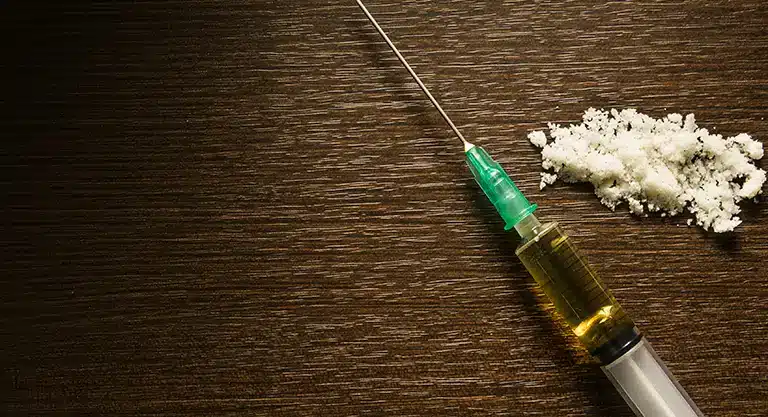
Heroin Withdrawal and Treatment Options
Managing heroin addiction can be an intimidating yet attainable goal. The process starts with the management of withdrawal, which involves the cessation of heroin use and enduring a demanding detoxification phase. Typically extending 10 to 14 days, this period associated with overcoming addiction to heroin is usually marked by withdrawal symptoms that should ideally be overseen by healthcare professionals.
Detoxification Process
In the quest for recovery, the detoxification stage is essential. For those experiencing heroin withdrawal, it’s important that the detox area offers a peaceful and serene setting suitable for relaxation or light activities. To ensure proper care management during this phase, patients are frequently assessed with instruments such as the Short Opioid Withdrawal Scale to determine an effective treatment plan.
Rehabilitation Programs
After completing detoxification, a person enters the rehabilitation stage of recovery from heroin addiction. Rehab programs tailored for heroin addiction involve both inpatient and outpatient options, with treatment plans designed to address individual needs through diverse therapeutic methods.
Inpatient rehab provides an organized setting where intensive therapy is provided, whereas outpatient rehab allows for greater scheduling flexibility as therapy sessions are arranged over the week.
Summary
Ultimately, we must acknowledge that the challenge of heroin addiction transcends individual struggles. It is a societal dilemma necessitating a unified response. Recognizing and being knowledgeable about the symptoms of heroin addiction equips us to contribute effectively in this worldwide battle. Rather than ostracizing those suffering from addiction, our role should be one of support and assistance, steering them towards recovery and reclaiming their lives.
Related Posts

Critical Signs of Meth Addiction: Symptoms & Support Options
Wondering what are the warning signs of meth addiction? Early detection can be lifesaving. From drastic behavioral swings to ‘meth mouth,’ these symptoms are alarming

Essential Guide on How to Help Someone with Meth Addiction
If you’re seeking to understand how to help someone with meth addiction, this article is your immediate support guide. Encountering meth addiction within someone you

Recognizing the Warning Signs of Marijuana Addiction
Knowing the signs of marijuana addiction is vital for recognizing a serious problem that often goes unnoticed. In this article, we address the real indicators

Decoding Opioid Addiction Statistics: A Harsh Reality Check
What do the numbers say about the opioid crisis? Diving into opioid addiction statistics offers a sobering reality check: a surge in usage and deaths

Effective Strategies on How to Prevent Opioid Addiction
The key to preventing opioid addiction starts with being informed. If you’re seeking concrete steps on how to prevent opioid addiction, this article is for

How to Help Someone with Cocaine Addiction Effectively
Wondering how to help someone with cocaine addiction? It can feel overwhelming, but your role is crucial. In this guide, you’ll find understandable and practical
